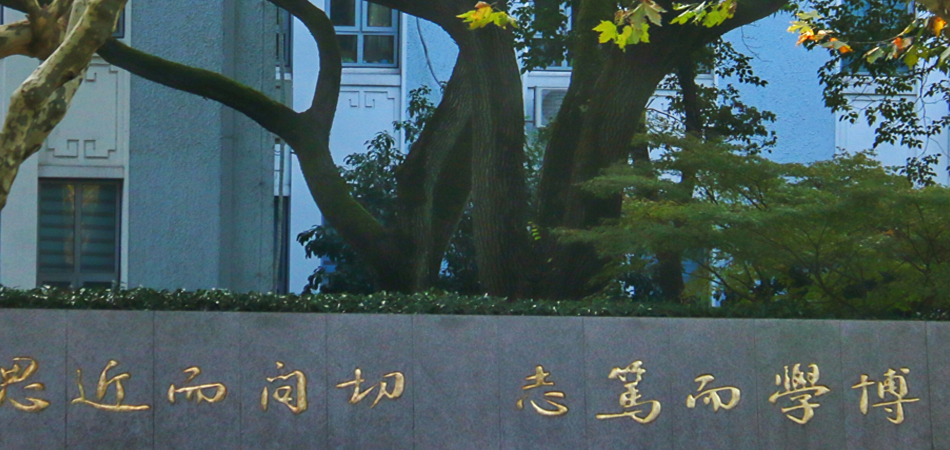
Jianming Wu
Physical Chemistry
Associate Professor
 jianmingwu@fudan.edu.cn
jianmingwu@fudan.edu.cn
 Room A3025, Chemistry Building, Department of Chemistry, Fudan University 2005 Songhu Road, Yangpu District, Shanghai 200438, China
Room A3025, Chemistry Building, Department of Chemistry, Fudan University 2005 Songhu Road, Yangpu District, Shanghai 200438, China
 86-21-31242032
86-21-31242032
Research Interests
Density functional theory and its numeric correction models
Cheminformatics
Biography
Associate Professor of Fudan University from 2011
Senior Engineer of PCOSS in Xiamen University (2008~2011)
Staff member and Engineer of PCOSS in Xiamen University (1998~2008)
Sep. 2002 to Apr. 2008, Xiamen University, Dr. Sc. degree
Sep. 1995 to Jul. 1998, Xiamen University, M. Sc. degree
Sep. 1991 to Jul. 1995, Xiamen University, B.Sc. degree
Teaching
Physical Chemistry AI
Key Publications
Photocaging of N-pyridinyl amide scaffold-based PIM inhibitors for spatiotemporal controlled anticancer bioactivity, Bioorg. Med. Chem., 24(2025),118159
X2-PEC: a neural network model based on atomic pair energy corrections, J. Comput. Chem., 46:8(2025), e70081
X2-GNN: a physical message passing neural network with natural generalization ability to large and complex molecules, J. Phys. Chem. Lett., 15 (2024), 12501-12512
Constructing accurate and efficient general-purpose atomistic machine learning model with transferable accuracy for quantum chemistry, J. Chem. Theor. Comput., 20:21(2024), 9500-9511
A Dataset Representativeness Metric and A Slicing Sampling Strategy for the Kennard-Stone Algorithm, Chem. J. Chin. Univ., 43:10 (2022), 20220397
Accurate heats of formation of polycyclic saturated hydrocarbons predicted by using the XYG3 type of doubly hybrid functionals, J. Comput. Chem., 40(2019), 1113-1122
X1se: a combined method of density functional calculation and neural network correction for accurate prediction of heats of formation, Sci. Sin. Chim., 46:1 (2016), 38-50
How well can B3LYP heats of formation be improved by dispersion correction models? Theor. Chem. Acc., 135(2016), 44
Improving B3LYP heats of formation with three‐dimensional molecular descriptors. J. Comput. Chem., 37(2016), 1175-1190
The X1 family of methods that combines B3LYP with neural network corrections for an accurate yet efficient prediction of thermochemistry, Int. J. Quant. Chem., 115(2015), 1021-1031
Calculations of ionization energies and electron affinities for atoms and molecules: a comparative study with different methods, Front. Chem. China, 6:4 (2011), 269-279
Theoretical studies on thermochemistry for conversion of 5-Chloromethylfurfural into valuable chemicals, J. Phys. Chem. A, 115:46 (2011), 13628–13641
Accurate bond dissociation enthalpies by using doubly hybrid XYG3 functional, J. Comput. Chem., 32 (2011), 1824–1838
The X1s method for accurate bond dissociation energies, ChemPhysChem, 11(2010), 2561-256715.Extending the reliability and applicability of B3LYP, Chem. Commun., 46(2010), 3057-3070 (Feature Article)
Trends in R-X bond dissociation energies (R• =Me, Et, i-Pr, t-Bu, X• =H, Me, Cl, OH), J. Chem. Theory Comput., 6:5 (2010) 1447-1454
Accurate prediction of heats of formation by a combined method of B3LYP and neural–network correction, J. Comput. Chem., 30:9 (2009) 1424-1444
Improving the B3LYP bond energies by using the X1 method, J. Chem. Phys., 129(2008) 164103
The X1 method for accurate and efficient prediction of heats of formation, J. Chem. Phys., 127(2007) 214105








